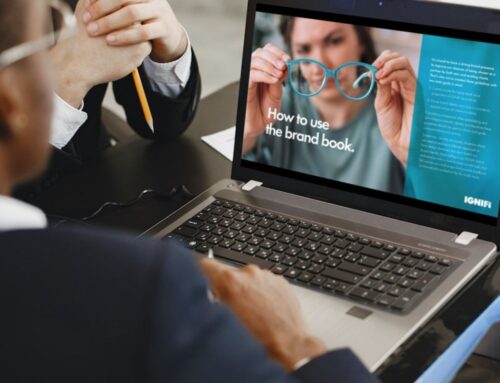
It’s time to talk about femtech: the rapidly growing industry providing digital healthcare for women. In this blog we give you a brief overview of femtech including its potential applications, the major challenges the industry is facing, and our hopes for the future.
So what is femtech?
The term ‘femtech’, short for female technology, was originally coined in 2016 by Ida Tin1 (co-founder and CEO of menstrual cycle tracking app Clue) and refers to software, diagnostic equipment and products that use technology to improve the health and lives of women.
As we have spoken about in previous blogs, there are a lot of areas in women’s health that require improvement, such as people feeling dismissed by their GPs when explaining their symptoms,2–4 or the fact that there are certain conditions which are extremely prevalent in the female population but remain underdiagnosed and poorly understood, like endometriosis.5,6 It is hoped that by taking an innovative approach to women’s health, the femtech industry will provide solutions to some of these issues.
Why is the industry proving to be so successful?
While the COVID-19 pandemic has accelerated the adoption of digital practices across many areas of healthcare (it is estimated that digital adoption for both consumers and businesses moved forward by 5-years in the space of eight weeks7), the femtech industry was already beginning to take off before this industry shake-up.8 Within the past 5 years, femtech has seen a boom in both revenue and popularity.9 While initially focussing on fertility and period tracking, it is now expanding to cover everything from pelvic floor health to improving diagnostic rates of certain cancers.
So why is femtech proving to be such a hit? Is it down to the ethos of addressing long-neglected areas of healthcare and providing the services that women have been requesting for years? Or could it be that by giving the industry a name, it’s made products addressing the more ‘taboo’ women’s health issues more appealing to investors and highlighted a new market niche?10 Whatever the answer, we believe that female technology is going to be a mainstay in women’s health going forward.
Who is femtech for?
The target audience of these technologies has also broadened over time. Although the majority of femtech falls under the direct-to-consumer category (with products such as smartphone apps and devices including everything from newly designed breast pumps to wearable fertility trackers), there are also companies that create products for HCPs (like updated diagnostic tools or apps to support HCPs on particular women’s health topics).
As we discussed in our previous blog, ‘Marketing healthcare and lifestyle to millennials’, people between the ages of 24–40 have a particularly strong demand for convenient, digital solutions. In fact 36% of all online purchases come from the millennial generation.11 However, the older generations Gen X and Baby Boomers, along with the younger Gen Z are also embracing digital.12
As a result, this digital-focussed industry follows the trend by predominantly creating products for women in their reproductive years. There is a vast array of products focussed on cycle tracking, pregnancy planning and the early years of motherhood. As the industry expands, we are also seeing more products available for the older age groups who still have a strong digital capability: for example apps that provide advice on going through menopause.13
Ultimately, the major benefits of femtech include allowing these women to gain a greater level of understanding and control over their own health along with widening access and knowledge to the less well-understood women’s health topics, all in an innovative and digitally convenient way.

The Main Challenges
As the femtech industry is rapidly gaining momentum, there are some obvious challenges and concerns that need to be addressed:
Funding
While predictions for investment in femtech are good,14 and there have been a series of high-profile funding wins for femtech companies over the last year,15 there are still hurdles to overcome. The most obvious being that while the vast majority of femtech companies are pioneered by women, female-led start-ups only make up a small fraction of investments – accounting for less than 3% of venture capital funding in 2020.16
Could the involvement of more high-profile influencers and celebrities be a way to garner more attention from both investors and the general public? The Jennis app, founded and fronted by Dame Jessica Ennis Hill is a perfect example, having recently received €1.17 million in pre-seed funding.17
Within the UK at least, we are increasingly seeing more and more women in the public eye open up about their experiences with women’s health: including television presenter Naga Munchetty discussing her negative experience with getting a contraceptive coil fitted18; and more recently radio presenter Jo Whiley confessing how her experience of menopause negatively impacted her work life.18
Quality control and regulation
With femtech products increasingly bridging the gap between wellbeing and medical devices, regulation is proving to be a complex topic along with creating confusion for the consumer.20 For example, period trackers use a variety of metrics and inputs to influence their predictions – how does the consumer know which product is more accurate?
Birth control apps in particular have been facing backlash when it comes to their claims. Natural Cycles have already experienced complaints from several regulatory bodies for the efficacy claims made in their adverts.21 While the app is approved for sale in the UK and can be advertised to the public, NICE still argues that there is not yet sufficient evidence for the app to be recommended as an approved form of contraception by the NHS.22 So it’s important that as the industry grows, the regulations catch up.
Privacy
While the vast amount of data collected through these apps and products has the potential to narrow the gender health gap, it’s is critical that the uses of this data are securely managed. Cycle tracking app Flo has already come under scrutiny for allegedly disclosing sensitive health information – including pregnancies within its users – to third party companies.23 In order to maintain the confidence of the women who use them, this is another area in which femtech companies will need to be careful, especially if the data is ever to be used for future research purposes.
Audience
Despite the femtech industry broadening its products and targets, it is still predominantly focussed on women in their reproductive years or going through menopause, leaving unmet health needs for women outside of this age range.24 Will we see femtech branch out even further to fill this gap?
If this is to be the case, a key consideration will be that while the primary audience for femtech right now is of an age more likely to engage with technology such as smartphones, older audiences have lower levels of digital confidence and are less likely to have access to the relevant devices,25 potentially excluding these adults further from an increasingly digital society and creating further challenges for the industry to address.

Looking to the future
While femtech is taking a refreshing approach to healthcare by putting women front and centre, it is still an industry in it’s infancy that requires a lot of work. We personally are interested to see where the future of femtech lies, and what other neglected areas of healthcare could benefit from the increasing prevalence of digital solutions.
For more content on women’s health, digital healthcare, marketing best practice and much more, keep an eye on our blog.








